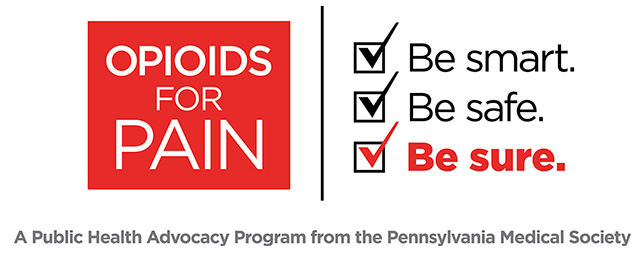AMA Adopts New Public Health Policies at Annual Meeting
The AMA adopted the following new policies.
Adverse Heath Effects of Nighttime Lighting: The AMA today adopted policy recognizing that exposure to excessive light at night can disrupt sleep, exacerbate sleep disorders and cause unsafe driving conditions. The policy also supports the need for developing lighting technologies that minimize circadian disruption and encourages further research on the risks and benefits of occupational and environmental exposure to light at night.
“The natural 24-hour cycle of light and dark helps maintain alignment of circadian biological rhythms along with basic processes that help our bodies to function normally,” said AMA board member Alexander Ding, M.D. “Excessive exposure to nighttime lighting disrupts these essential processes and can create potentially harmful health effects and hazardous situations.”
“This type of disruption especially impacts those employed by industries requiring a 24-hour workforce as well those faced with unsafe driving conditions caused by artificial lights on cars and roadway illumination. By supporting new technologies that will reduce glare and minimize circadian disruption, the AMA is taking steps to improve both public health and public safety.”
Sales of Tobacco in Pharmacies: Expanding on current policy opposing the sale of tobacco by pharmacies, the AMA today adopted policy that would create a recognition program for pharmacies that voluntarily eliminate the sale of tobacco.
“Pharmacies that simultaneously sell tobacco cessation products alongside cigarettes and tobacco products are sending a mixed message to consumers, and the AMA wants to publicly recognize those pharmacies that put the health of their customers first by not selling tobacco,” said Dr. Ding. “Tobacco remains the leading preventable cause of death and disease in our country, and the AMA is committed to helping smokers quit and preventing kids from picking up this deadly habit.”
AMA Adopts Policy Addressing Obesity, Beverages with Added Sweeteners
“While there is no silver bullet that will alone reverse the meteoric rise of obesity, there are many things we can do to fight this epidemic and improve the health of our nation,” said AMA board member Alexander Ding, M.D. “Improved consumer education on the adverse health effects of excessive consumption of beverages containing added sweeteners should be a key part of any multifaceted campaign to combat obesity.”
A number of studies have shown that intake of sugar-sweetened beverages has been strongly and consistency associated with increased body weight and a number of health conditions like type 2 diabetes. Sugar-sweetened beverages comprise nearly half of Americans’ added sugar intake, and reducing consumption of these beverages is a simple way to reduce intake of added sugar and empty calories.
New policy adopted today by the AMA recognizes that while a number of factors contribute to the obesity epidemic, taxes on beverages with added sweeteners are one way to finance consumer education campaigns and other obesity-related programs. Where taxes on beverages with added sweeteners are implemented, the revenue generated should primarily be used for programs to prevent or treat obesity and related conditions.
“Where taxes are implemented on sugar-sweetened beverages, using revenue for anti-obesity programs and educational campaigns explaining the adverse effects of excessive consumption of these beverages will help to reduce the consumption of these caloric beverages and improve public health,” said Dr. Ding.
The AMA will also advocate for continued research into the potentially adverse effects of long-term consumption of non-caloric sweeteners in beverages, particularly in children and adolescents as a result of this new policy.
AMA to Evaluate ICD-11 as a New Diagnostic Coding System: Delegates at the AMA’s Annual Meeting today adopted policy to evaluate ICD-11 as a possible alternative to replace ICD-9. The AMA will conduct more research on this issue and will report back to the House of Delegates in 2013.
“ICD-10 coding will create unnecessary and significant financial and administrative burdens for physicians,” said AMA President-elect Ardis Dee Hoven, M.D. “It is critical to evaluate alternatives to ICD-9 that will make for a less cumbersome transition for physicians and allow physicians to focus on their primary priority – patient care. AMA voted today to consider ICD-11 as a possible alternative. The policy also asks the AMA and other stakeholders, such as the Centers for Medicare and Medicaid Services, to examine other options.”
Opposing Legislation to Exempt Cigars from FDA Oversight: Cigars are being marketed to youth in a range of attractive flavors like candy, alcohol, fruit and chocolate. Cigar smoking is the second most common form of tobacco use among youth, and each day almost 3,000 children under 18 years old try cigar smoking for the first time. The AMA passed policy today to block legislation that would exempt flavored cigars from Food and Drug Administration oversight.
“Tobacco use can lead to serious cardiovascular conditions and remains the leading cause of preventable death and disease in the United States,” said Dr. Hoven. “The AMA has long held policy against flavored tobacco and marketing it to youth. It is important that we help our children make good decisions so that they may lead healthy lives.”
�
Drug Courts as Incarceration Alternative for Nonviolent Criminals: New AMA policy encourages the establishment of drug courts at the state and local level as an alternative to incarceration and a means of overcoming addiction for individuals with addictive disease convicted of nonviolent crimes. According to the National Association of Drug Court Professionals, drug courts are an alternative to individuals with addictive disease, providing them with intensive treatment and regular drug testing. A 2009 study of the National Institute of Justice found that drug court participants had significantly fewer positive drug tests and reported better improvements in their family relationships.
�
“Individuals with addictive disease require treatment,” said Dr. Hoven. “When an individual is convicted of a nonviolent crime, drug courts can provide the medical attention, support and accountability needed to help them conquer their addiction and turn their lives around.”
Dispensing Medically Appropriate Quantities of Formulary Medications: Pharmacy benefit managers and insurers institute prescription drug quantity limits that dictate the number of dosage units of a particular drug that will be covered by the plan for a specific period of time. The AMA voted today to work with third party payers to create an exceptions process to ensure that patients can access higher or lower quantities of medically necessary drugs or testing and treatment supplies.
“It is imperative that medication quantity limits do not prevent a patient from getting the medication they need when they need it,” said AMA Board Member Carl A. Sirio, M.D. “In patients with bipolar disorder or schizophrenia, for example, physicians need the flexibility to prescribe different medications in different doses and combinations to meet the unique needs of each individual patient. To avoid the dire consequences that can result if patients are not able to immediately and easily access medically required drugs, an exceptions process must be created to ensure that patients can get the medications their physician prescribes.”
SOLUTIONS FOR NATIONAL DRUG SHORTAGES: A drug shortage may compromise and delay treatments, leading to the progression of diseases, adverse outcomes or therapeutic failures. While this is a complex problem that will require a multi-pronged approach to solve, there is evidence that advance notification of potential problems can help prevent or resolve drug shortages. Today, the AMA voted to require manufacturers of FDA approved drugs to give the agency at least 6 months notice, or as soon as is practicable, of anticipated voluntary or involuntary, permanent or temporary, discontinuance of the manufacture or marketing of such a product. The policy also supports the creation of a task force to enhance the HHS Secretary’s response to preventing and mitigating drug shortages and to create a strategic plan to address ongoing aspects of drug shortages.
“National drug shortages often prevent patients from getting the right drugs at the right time, threatening patient care and safety,” said AMA board member Patrice A. Harris, M.D. “The AMA is committed to solving this complex problem, and we will continue to work with stakeholders to advocate for solutions that protect the health of our patients.”
PROMOTING PREVENTION OF FATAL OPIOID OVERDOSE: Opioid addiction and prescription drug abuse places a great burden on patients and society, and the number of fatal poisonings involving opioid analgesics more than tripled between 1999 and 2006. Naloxone is a drug that can be used to reverse the effects of opioid overdose. The AMA today adopted policy to support further implementation of community-based programs that offer naloxone and other opioid overdose prevention services. The policy also encourages education of health care workers and opioid users about the use of naloxone in preventing opioid overdose fatalities.
“Fatalities caused by opioid overdose can devastate families and communities, and we must do more to prevent these deaths,” said Dr. Harris. “Educating both physicians and patients about the availability of naloxone and supporting the accessibility of this lifesaving drug will help to prevent unnecessary deaths.”
UPDATING MAMMOGRAPHY SCREENING RECOMMENDATIONS: Mammography is the most reliable breast cancer screening tool for the general population, but it also has limitations. As a result, several organizations have recommended various mammography screening guidelines. Today, the AMA has adopted policy that starting at age 40, all women should be eligible for screening mammography. The policy also supports insurance coverage for this screening.
“Early detection of breast cancer increases the odds of a patient’s survival, and mammography screenings are an important tool in discovering this cancer,” said Dr. Harris. “All patients are different and have varying degrees of cancer risk, and patients should regularly talk with their doctors to determine if mammography screening is right for them.”




